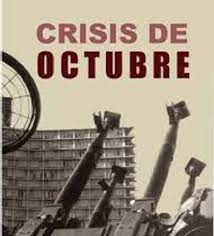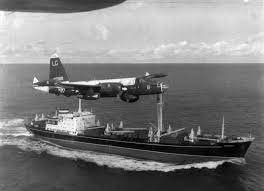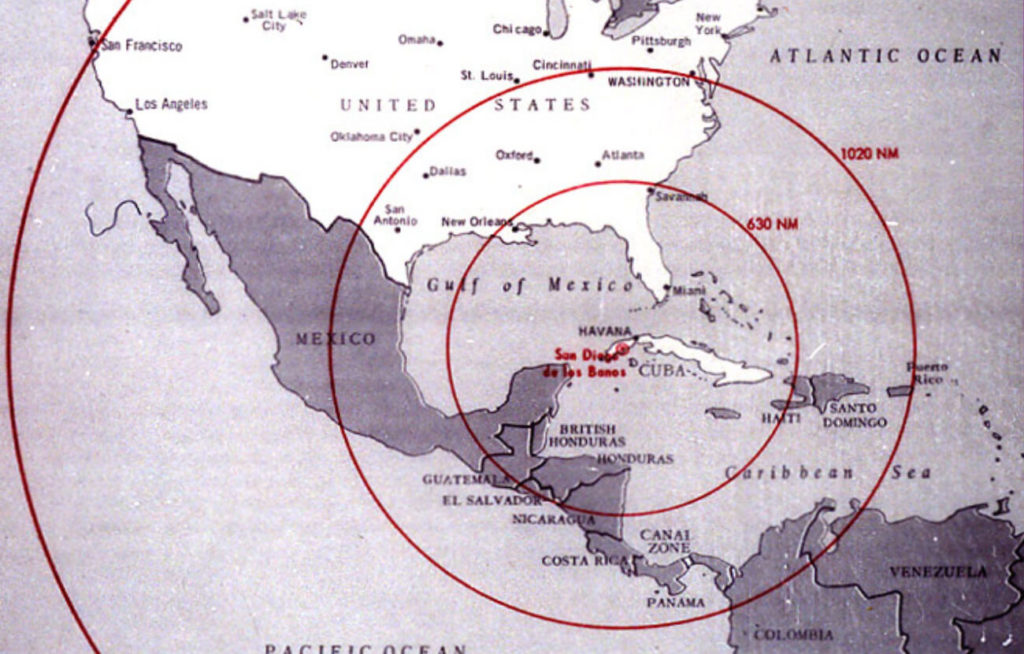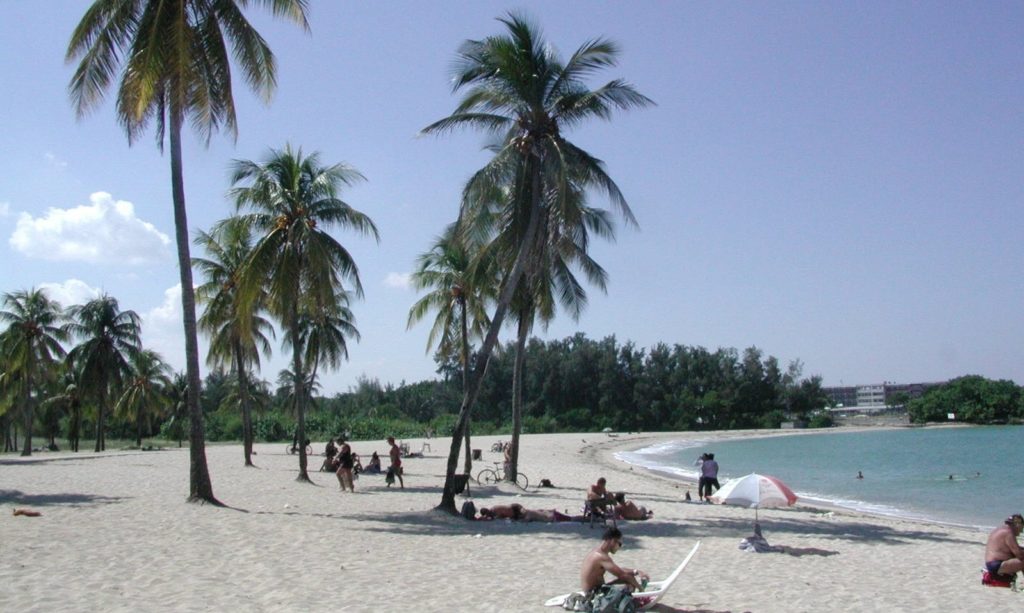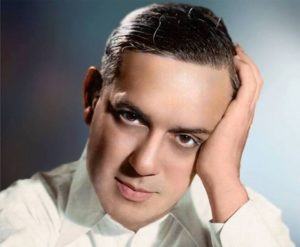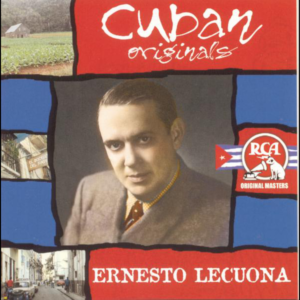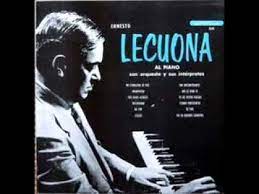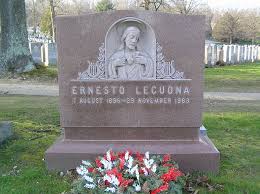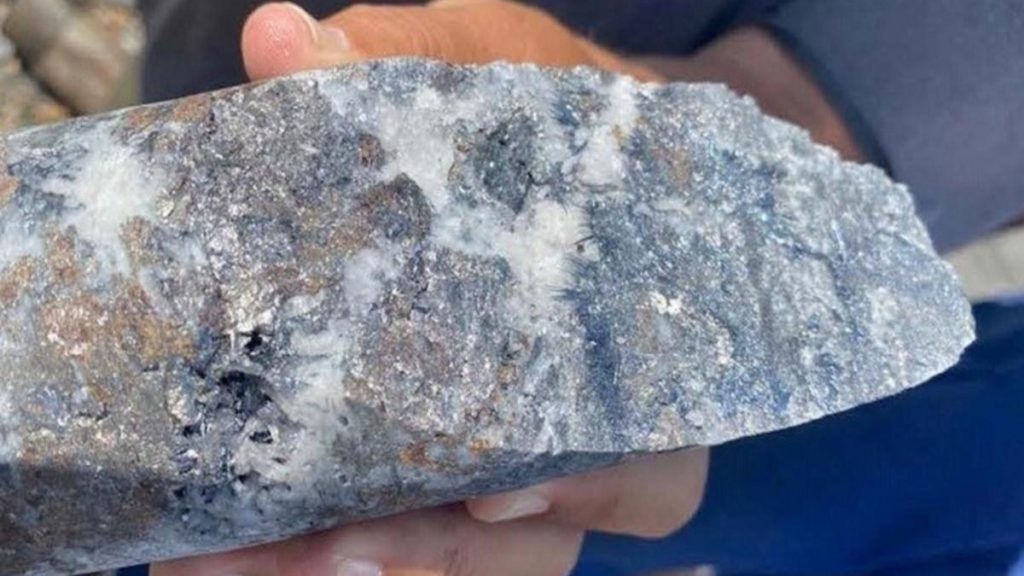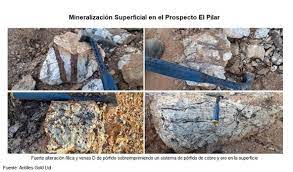SUCEDIÓ EN CUBA DURANTE UN MES DE OCTUBRE YA CASI OLVIDADO. PHOTOS.
En mayo de 1962, el Moscú decide establecer una fuerza militar en suelo cubano bajo el mando operativo del general del ejército soviético Issa Pliyev, veterano condecorado de la Segunda Guerra Mundial. El operativo fue bautizado con el nombre de “Operación Añádir” que fue el código utilizado por la Unión Soviética para identificar esta operación militar secreta.
En el marco de la Operación Añádir, entre el 17 de junio y el 22 de octubre de 1962 el gobierno de la URSS remitió a Cuba 24 plataformas de lanzamiento, 42 misiles balísticos de alcance medio R-12 y R-14 (incluyendo seis destinados a realizar tareas de entrenamiento), unas 45 ojivas nucleares, misiles balísticos de alcance medio R-6, un regimiento de aviones de caza de combate que incluía 40 aeronaves (Mikoyan-Gurevich MiG-21), 42 bombarderos Ilyushin Il-28, dos divisiones de defensa antiaérea soviéticas, una Brigada de Infantería Motorizada del ejército soviético, varios batallones de tanques medio ligero T-34 (último modelo) y otras unidades militares, alcanzando un total de mas de 47.000 efectivos con el objetivo de crear una fuerza militar capaz de prevenir o defender de una invasión a la isla de Cuba por parte de las Fuerzas Armadas de los Estados Unidos de Norteamerica, después se reveló que también se instalaron misiles tácticos nucleares de corto alcance, que podrían alcanzar a barcos de guerra frente a las costas de Cuba, justo en el momento de un desembarco anfibio sobre la isla.
Como complemento, Nikita Khrushchev dispuso la “Operación Kama” por la cual una flotilla de cuatro submarinos soviéticos “Foxtrot B-59” cargados con torpedos nucleares partirían hacia Cuba al mando de los oficiales de la Marina de Guerra soviética el capitán Vasili Arjípov que estaba a cargo de la flota, primer oficial capitán Valentín Savitski y el oficial de inteligencia Vadim Orlov, con el objetivo de instalar una base naval soviética en Cienfuegos. Esta operación fracasó en sus objetivos cuando las naves soviéticas fueron detectadas, interceptadas y obligadas por buques estadounidenses a abandonar la misión y regresar a la URSS.
COMIENZA LA CRISIS
Un avión espía U-2 de La Fuerza Aérea Estadounidense en vuelo sobre Cuba a mediados de 1962 descubre y fotografía las instalaciónes del Misil balístico de alcance medio R-6 (misil) operado por personal militar soviético en Cuba Analistas de la Agencia Central de Inteligencia (CIA) señalaron al Presidente de los Estados Unidos John F. Kennedy que las estructuras y plataformas de lanzamiento fotografiadas en Cuba parecían corresponder a instalaciones de misiles tácticos, todavía no operativas pero que lo estarían en muy poco tiempo, lo cual significó para el Presidente Kennedy y su gobierno una gran preocupación y amenaza, por cuanto apenas 200 kilómetros separaban al territorio estadounidense (específicamente la península de Florida) de las costas cubanas (distancia que se consideraba fácilmente superable por los misiles soviéticos) y dejarían sin respuesta a la defensa de EEUU y los sistemas de alerta temprana de batalla.
El 22 de octubre de 1962, el Presidente John F. Kennedy sumamente preocupado se dirigió a la nación estadounidense con un mensaje televisado de 17 minutos, explicándole al pueblo americano del peligro. Allí, habló por primera vez públicamente de establecer una cuarentena y un “cerco o bloqueo naval” alrededor de la isla de Cuba. Para cumplir esta medida se desplegaron barcos y aviones de guerra estadounidenses en el Mar Caribe a partir del 23 de octubre, destinados a ejercer un auténtico bloqueo aéreo-naval.
La posición estadounidense se enfrentaba firmemente a la soviética y la perspectiva de una guerra abierta entre los dos países la URSS y los EEUU parecía inminente, sea con un mutuo ataque de misiles intercontinentales ICBM o atacando la URSS a los países aliados de EEUU en Europa Occidental, mientras los consejeros militares del presidente Norteamericano John F. Kennedy consideraban seriamente el escenario de una guerra nuclear a gran escala para detener a la URSS.
Enterado de lo ocurrido el primer ministro soviético, Nikita Khrushchev dirigió un mensaje urgente al Presidente Kennedy el 24 de octubre amenazando que: ” La URSS ve el bloqueo como una agresión y no instruirá a los barcos que se desvíen »; pero contrario a la amenaza del mensaje, en las primeras horas de la mañana, los buques soviéticos disminuyeron la velocidad en sus desplazamientos hacia Cuba, con el fin de evitar algún enfrentamiento o conflicto mayor, mientras se abrían las posibilidades de una negociación o arreglo entre las partes.
Mientras todo esto sucedía, los barcos de la Marina de Guerra de los Estados Unidos (US NAVY) continuaban buscando navíos soviéticos en ruta hacia Cuba, ordenándoles por radio y comunicaciones navales su desvío en caso de hallarlos, pero ninguno de ambos bandos se atrevía a usar la fuerza para lograr sus fines, por temor a las repercusiones en otras partes del mundo, una respuesta militar de la URSS en Europa o un ataque en Alemania.
El 26 de octubre el gobierno soviético enviaba a Washington D.C. un mensaje personal de Khrushchev a Kennedy para llegar a un acuerdo: los buques soviéticos se retirarían de la zona si el gobierno estadounidense en un anuncio público renunciaba a derrocar al régimen de Fidel Castrol, prometiendo no patrocinar ningún ataque bélico con ese fin.
Además, la propuesta soviética exigía que los Estados Unidos tenían que desmantelar las bases de misiles nucleares estadounidenses situadas en territorio de Turquía, país fronterizo con la URSS. También se pedía el retiro del misil balístico de alcance medio PGM-19 “Jupiter” que los estadounidenses mantenían en el sur de Italia.
El sábado 27 de octubre de 1962 (Sábado Negro), El mayor de la Fuerza Aérea Estadounidense Rudolph Anderson (Top-Pilot) del 4080th Strategic Reconnaissance Wing’s de la fuerza Aérea despegó de la base Aérea McCoy en Orlando, Florida piloteando un avión espía de reconocimiento U2-F (AF Serial Number 56-6676). Despues de varias horas de vuelo en su misión de reconocimiento sobre territorio oriental cubano fue derribado por un cohete interceptor soviético S-75 Dvina (designado por la NATO como un misil interceptor SA-2 tierrra-aire) estacionado en una base soviética cerca de Banes, Oriente, Cuba, de la defensa aérea de la Brigada de Infantería Motorizada del ejército soviético estacionada en suelo oriental cubano, matándo al piloto, el mayor de la Fuerza Aérea Estadounidense Rudolph Anderson, aumentando aún más la tensión en la zona.
Mientras el mundo estaba preocupado y pendiente del peligro de una confrontación nuclear, los negociadores soviéticos y estadounidenses realizaban urgentes y continuas negociaciones secretas durante todo el día 27, en Washington y en Moscú, transmitiendo las propuestas de uno y otro bando para solucionar la crisis.
En esas negociaciones secretas estuvo excluido Fidel Castro, el gobierno soviético se negó a realizar consultas sobre el tema con el régimen de La Habana. De hecho, el 26 de Octubre el gobierno cubano le había pedido a Khrushchev no cediera ante el presidente norteamericano John F. Kennedy pues una intervención armada estadounidense contra la isla de Cuba se consideraba “inminente”.
Las tropas soviéticas estacionadas en Cuba recibieron órdenes de Moscú de mantenerse en estado de alerta de combate en sus puestos hasta recibir nuevas órdenes, manteniendo bajo su exclusiva custodia todo el arsenal nuclear, prohibiéndole al personal militar cubano la entrada en sus bases.
Tras las negociaciones secretas, el presidente norteamericano John Fitzgerald Kennedy y su gabinete aceptaron la oferta soviética en la madrugada del domingo 28 de octubre y la creación de una línea de comunicación directa entre Washington DC y Moscú a través del teléfono rojo, a espaldas del gobierno comunista de Fidel Castro y del exilio cubano.
¿COBARDÍA O TRAICIÓN?
Este acuerdo se conoció más tarde, ya que el Presidente Kennedy lo aceptó con la condición puesta por la URSS que los EEUU se comprometía no solo de no invadir con tropas estadounidenses la isla de Cuba, tambien se comprometía en no apoyar a ningún grupo de exiliados cubanos y vigilar que ningúna parte del territorio norteamericano fuera usada de base a ningún grupo armado con la intención de luchar por la libertad de su Patria, contra el gobierno comunista de Fidel Castro.
El acuerdo incluído de desmantelar el Misil balístico norteamericano de alcance medio PGM-19 “Jupiter” emplazado en las bases norteamericanas en Turquía no fue hecho público hasta que se llevó a cabo seis meses después.
En los primeros días de noviembre, el espionaje aéreo estadounidense mostraba que buques soviéticos cargaban el armamento nuclear desplegado hasta entonces en Cuba, cumplimiento el acuerdo del 28 de octubre. El 20 de noviembre el gobierno de EEUU puso fin a sus patrullajes navales alrededor de la isla de Cuba.
Fidel Castro extremadamente incómodo e inconforme con el acuerdo URSS-USA, le reclama a Nikita Khrushchev, dos días después el 22 de noviembre el primer ministro soviético Anastas Ivanovich Mikoyan visita La Habana informando a Fidel Castro que la presencia de la Brigada de Infantería Motorizada del ejército soviético, continuaría en Cuba pero sólo dotada de armas convencionales, retirando la URSS todo su armamento nuclear y el Misil balístico de alcance medio de la isla de Cuba a pesar de inconformidad y las renovadas solicitudes del gobierno cubano en sentido contrario.
En 1995, en tiempos de la perestorika y el glasnot, 33 años después del pacto Kennedy-Khrushchev, Moscú ordena la retirada de los últimos 500 efectivos militares de la Brigada de Infantería Motorizada del ejército soviético que permanecieron en la isla de Cuba desde 1962 como parte principal de la “OPERACIÓN AÑÁDIR”, mientras que el gobierno de los Estados Unidos de Norteamérica “ALIADO DE LOS EXILIADOS CUBANOS”, persigue, arresta y manda a prisión a cualquier cubano o grupo cubano que trate de luchar por la via armada contra el Gobierno Revolucionario instalado en la Isla de Cuba.
IT HAPPENED IN CUBA DURING A MONTH OF OCTOBER THAT HAS ALMOST BEEN FORGOTTEN. PHOTOS.
In May 1962, Moscow decides to establish a military force on Cuban soil under the operational command of Soviet Army General Issa Aliyev, a decorated World War II veteran. The operation was baptized with the name “Operation Anádir” which was the code used by the Soviet Union to identify this secret military operation.
Within the framework of Operation Anádir, between June 17 and October 22, 1962, the USSR government sent Cuba 24 launch platforms, 42 R-12 and R-14 medium-range ballistic missiles (including six destined to carry out training tasks), some 45 nuclear warheads, R-6 medium-range ballistic missiles, a fighter jet regiment that included 40 aircraft (Mikoyan-Gurevich MiG-21), 42 Ilyushin Il-28 bombers, two Soviet anti-aircraft defense divisions, a Soviet Army Motorized Infantry Brigade, several T-34 medium-light tank battalions (latest model) and other military units, totaling more than 47,000 troops with the aim of creating a military force capable of to prevent or defend against an invasion of the island of Cuba by the Armed Forces of the United States of America, later it was revealed that short-range tactical nuclear missiles were also installed, which could reach warships off the coast of Cuba, just at the time of an amphibious landing on the island.
As a complement, Nikita Khrushchev ordered: “Operation Kama” by which a flotilla of four Soviet submarines “Foxtrot B-59” loaded with nuclear torpedoes would depart for Cuba under the command of Soviet Navy officers, Captain Vasili Arjípov, who was in charge of the fleet, first officer Captain Valentín Savitski and intelligence officer Vadim Orlov, with the aim of installing a Soviet naval base in Cienfuegos. This operation failed in its objectives when the Soviet ships were detected, intercepted, and forced by American ships to abandon the mission and return to the USSR.
THE CRISIS BEGINS
A U.S. Air Force U-2 spy plane in flight over Cuba in mid-1962 discovers and photographs the installations of the R-6 Medium-Range Ballistic Missile (missile) operated by Soviet military personnel in Cuba Central Intelligence Agency Analysts (CIA) pointed out to the President of the United States John F. Kennedy that the structures and launch platforms photographed in Cuba seemed to correspond to tactical missile installations, not yet operational but that they would be in a very short time, which meant for President Kennedy and his government a great concern and threat since barely 200 kilometers separated the United States territory (specifically the Florida peninsula) from the Cuban coast (a distance that was considered easily overcome by Soviet missiles) and would leave the defense of Cuba unanswered. USA and battlefield early warning systems.
On October 22, 1962, a deeply concerned President John F. Kennedy addressed the American nation with a 17-minute televised address, explaining the danger to the American people. There, he spoke publicly for the first time about establishing a quarantine and a “naval siege or blockade” around the island of Cuba. To comply with this measure, US ships and warplanes were deployed in the Caribbean Sea as of October 23, destined to carry out a true air-naval blockade.
The American position was firmly opposed to the Soviet one and the prospect of an open war between the two countries, the USSR and the US, seemed imminent, either with a mutual ICBM missile attack or by the USSR attacking US allied countries in Western Europe. while US President John F. Kennedy’s military advisers were seriously considering the scenario of a full-scale nuclear war to stop the USSR.
Knowing what had happened, the Soviet Prime Minister, Nikita Khrushchev, sent an urgent message to President Kennedy on October 24 threatening that: “The USSR sees the blockade as an aggression and will not instruct the ships to divert”; but contrary to the threat After the message, in the early hours of the morning, the Soviet ships slowed down in their movements towards Cuba, in order to avoid any confrontation or major conflict, while opening up the possibilities of negotiation or settlement between the parties.
While all this was happening, the ships of the United States Navy (US NAVY) continued to search for Soviet ships en route to Cuba, ordering them by radio and naval communications to divert them if they were found, but neither side dared to use force to achieve their ends, fearing repercussions in other parts of the world, a military response from the USSR in Europe, or an attack in Germany.
On October 26, the Soviet government sent to Washington D.C. a personal message from Khrushchev to Kennedy to reach an agreement: the Soviet ships would withdraw from the area if the US government, in a public announcement, renounced to overthrow the regime of Fidel Castrol, promising not to sponsor any military attack for that purpose.
In addition, the Soviet proposal required the United States to dismantle US nuclear missile bases located on the territory of Turkey, a country bordering the USSR. Also called for was the withdrawal of the PGM-19 “Jupiter” medium-range ballistic missile that the Americans kept in southern Italy.
On Saturday, October 27, 1962 (Black Saturday), US Air Force Major Rudolph Anderson (Top-Pilot) of the Air Force’s 4080th Strategic Reconnaissance Wing took off from McCoy Air Force Base in Orlando, Florida piloting a spy plane from recognition U2-F (AF Serial Number 56-6676). After several hours of flight on his reconnaissance mission over eastern Cuban territory, he was shot down by a Soviet S-75 Dvina interceptor rocket (designated by NATO as an SA-2 surface-to-air interceptor missile) stationed at a Soviet base near Banes. , Oriente, Cuba, from the air defense of the Soviet Army’s Motorized Infantry Brigade stationed on eastern Cuban soil, killing the pilot, US Air Force Major Rudolph Anderson, further increasing tension in the area.
While the world was worried and aware of the danger of a nuclear confrontation, the Soviet and American negotiators carried out urgent and continuous secret negotiations throughout the 27th, in Washington and Moscow, transmitting the proposals of both sides to solve the crisis.
Fidel Castro was excluded from these secret negotiations, the Soviet government refused to hold consultations on the issue with the regime in Havana. In fact, on October 26, the Cuban government had asked Khrushchev not to give in to US President John F. Kennedy, since a US armed intervention against the island of Cuba was considered “imminent.”
The Soviet troops stationed in Cuba received orders from Moscow to remain in a state of combat alert at their posts until further orders are received, keeping the entire nuclear arsenal in its exclusive custody, and prohibiting Cuban military personnel from entering their bases.
After secret negotiations, US President John Fitzgerald Kennedy and his cabinet accepted the Soviet offer in the early hours of Sunday, October 28, and the creation of a direct line of communication between Washington DC and Moscow through the red telephone, behind the government’s back. communist of Fidel Castro and the Cuban exile
COWARDY OR TREASON?
This agreement became known later since President Kennedy accepted it with the condition set by the USSR that the US undertook not only not to invade the island of Cuba with US troops, but also undertook not to support any group of exiles. Cubans ensure that no part of the US territory was used as a base for any armed group with the intention of fighting for the freedom of their country, against the communist government of Fidel Castro.
The included agreement to dismantle the US PGM-19 “Jupiter” medium-range ballistic missile stationed at US bases in Turkey was not made public until six months later.
In the first days of November, US aerial espionage showed that Soviet ships were loading the nuclear weapons deployed until then in Cuba, in compliance with the October 28 agreement. On November 20, the US government ended its naval patrols around the island of Cuba.
Fidel Castro, extremely uncomfortable and dissatisfied with the USSR-USA agreement, complained to Nikita Khrushchev. Two days later, on November 22, Soviet Prime Minister Anastas Ivanovich Mikoyan visited Havana, informing Fidel Castro that the presence of the Motorized Infantry Brigade of the Soviet army, would continue in Cuba but only equipped with conventional weapons, the USSR withdrawing all its nuclear weapons and the medium-range ballistic missile from the island of Cuba despite disagreement and renewed requests from the Cuban government to the contrary.
In 1995, in times of perestroika and glasnost, 33 years after the Kennedy-Khrushchev pact, Moscow ordered the withdrawal of the last 500 soldiers of the Soviet Army’s Motorized Infantry Brigade who had remained on the island of Cuba since 1962 as the main part of “OPERATION ADD”, while the government of the United States of America “ALLY OF THE CUBAN EXILES”, persecutes, arrests and sends to prison any Cuban or Cuban group that tries to fight by armed means against the Revolutionary Government installed on the Island of Cuba.
Agencies/ El Californio/ Nekubu Haritier/ Extractos/ Excerpts/ Internet Photos/ Arnoldo Varona/ www.TheCubanHistory.com
THE CUBAN HISTORY, HOLLYWOOD.



